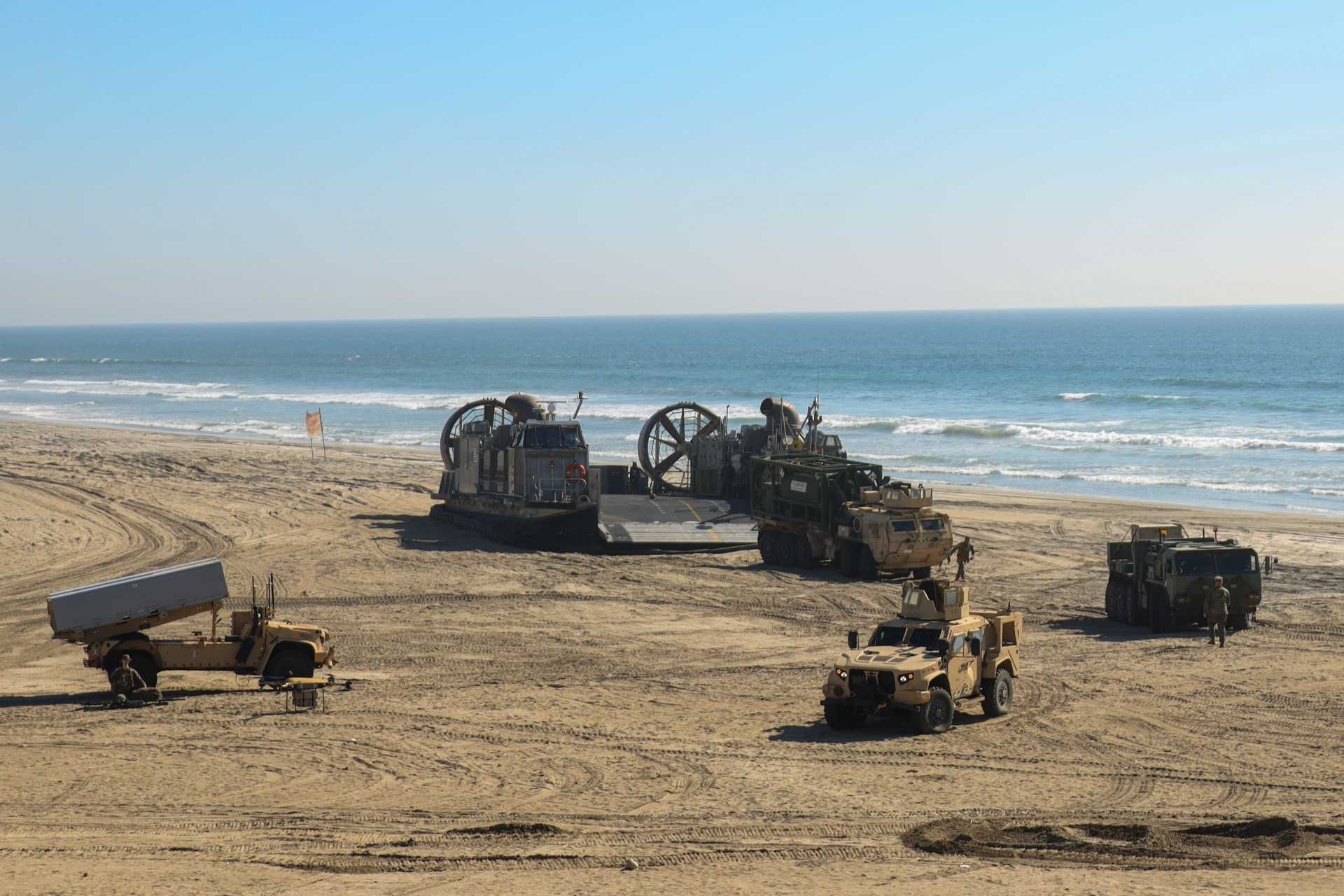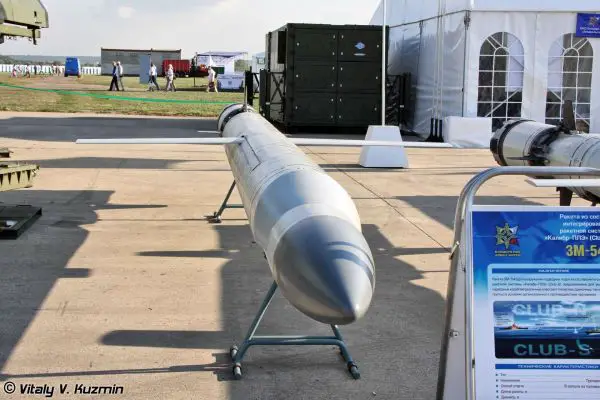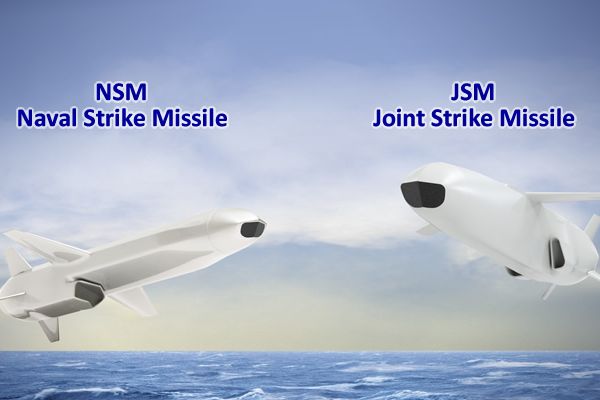Missiles.
NMESIS Navy-Marine Expeditionary Ship Interdiction System.

The NMESIS (Navy Marine Expeditionary Ship Interdiction System) is a highly mobile coastal anti-ship missile system developed to provide the U.S. Marine Corps with the ability to strike enemy surface vessels from land-based positions. By integrating the Naval Strike Missile (NSM) launcher with the ROGUE Fires Carrier, a remotely operated ground vehicle built on the Joint Light Tactical Vehicle (JLTV) chassis, NMESIS offers enhanced mobility, precision, and flexibility for modern coastal defense operations. As part of the Force Design 2030 initiative, the system is designed to increase the Marine Corps’ capabilities in expeditionary warfare, especially in littoral zones where traditional naval assets may be at risk or unavailable. The NMESIS system entered service in 2021, providing the Marine Corps with a critical tool for anti-ship warfare in remote and distributed operational environments.
Country users: United States
Description
The NMESIS (Navy Marine Expeditionary Ship Interdiction System) is a cutting-edge coastal anti-ship missile system developed to address the need for mobile, land-based missile strikes against enemy maritime targets. Integrating the Naval Strike Missile (NSM), produced by Lockheed Martin, with the ROGUE Fires Carrier, an unmanned ground vehicle built on the JLTV chassis by Oshkosh Defense, the NMESIS system is part of the U.S. Marine Corps' modernization efforts under Force Design 2030. This design, initiated in the late 2010s, enhances the Marine Corps’ ability to engage enemy ships at long ranges without relying on traditional naval platforms, providing a mobile anti-ship strike capability from land-based positions. The project began in the late 2010s as part of the Corps' push to improve anti-surface warfare capabilities, particularly in littoral zones where traditional naval assets may face operational limitations. The NMESIS integrates the proven Naval Strike Missile (NSM) with highly mobile ground-based systems, allowing the Marine Corps to deploy missile strikes from remote, dispersed locations, enhancing survivability and complicating enemy response.
The NMESIS entered operational service in 2021, following successful testing and field demonstrations, marking its place as the Marine Corps' first Ground-Based Anti-Ship Missile (GBASM) capability. As a Service Force Design Initial Operating Capability (IOC) priority, NMESIS is central to the Marine Corps' contribution to the Naval Expeditionary Force (NEF)’s anti-surface warfare campaign. It offers a new, highly mobile missile threat against peer adversaries, presenting challenges to enemy surveillance and offensive systems. Ground-based launchers like the NMESIS are difficult to detect and track in a cluttered environment, while adding persistence and depth to existing anti-ship capabilities. This provides a significant force projection capability, especially in contested environments.
On November 26, 2024, U.S. Marines with the 3rd Marine Littoral Regiment (MLR), 3rd Marine Division formally received the NMESIS as part of an intra-service handoff. The ceremony marked the conclusion of initial operational testing and evaluation phases for the system. To commemorate this milestone, the 3rd MLR held a receiving ceremony and NMESIS static display at Dewey Square on Marine Corps Base Hawaii. Distinguished visitors from across the U.S. military and partnered nations were invited to witness the event, highlighting the significance of NMESIS as a critical capability within the Marine Corps' evolving operational doctrine.
The NMESIS system will be employed by Medium-range Missile (MMSL) batteries, which serve as part of the Marine Littoral Regiments (MLR). These units will conduct Expeditionary Advanced Base Operations (EABO), positioning NMESIS platforms inside the adversary's Weapons Engagement Zone (WEZ) to strike enemy vessels effectively. When integrated into sensor and communication networks that support the naval/maritime kill chain, and synchronized with other missile systems, the NMESIS system forms a critical component of the NEF's "stand-in force". This integration supports the broader naval sea control effort, enhancing the Marine Corps' ability to operate and strike from distributed positions and engage in littoral warfare.
The NMESIS system employs the Naval Strike Missile (NSM), a highly capable, subsonic cruise missile that provides precise, long-range strike capabilities against a wide range of maritime targets. This system is specifically designed to counter large naval vessels as well as smaller commercial ships, providing an effective means of maritime interdiction. The NSM's ability to operate in complex, cluttered environments, using multi-mode guidance and a stealthy flight profile, makes it highly effective against modern naval threats.
In terms of operational mobility, the NMESIS system is highly adaptable. The ROGUE-Fires Carrier — a robotic unmanned ground vehicle based on the JLTV platform — provides high mobility across a range of terrains, enabling the NMESIS system to reposition rapidly as battlefield conditions change. This flexibility allows the Marine Corps to conduct operations in a distributed manner, deploying missiles at long-range standoff distances while remaining difficult to detect and counter.
As a result, the NMESIS system enhances the Marine Corps' ability to engage maritime threats from land, filling a critical role in littoral combat and contributing to a more robust anti-surface warfare capability in the evolving operational landscape.
On March 3, 2025, the 12th Marine Littoral Regiment (MLR) achieved a significant milestone in strengthening the U.S. military's capabilities in the Indo-Pacific with the integration of the NMESIS (Navy Marine Expeditionary Ship Interdiction System) anti-ship missile battery into the 12th Littoral Combat Team (LCT) based at Camp Hansen in Okinawa, Japan.
NMESIS variants:
No variants at this time
Technical Data
-
Launcher Unit
The NMESIS launcher unit is housed on the ROGUE Fires Carrier, which is based on the Joint Light Tactical Vehicle (JLTV) platform. The launcher system consists of a 4-cell vertical launch system that can carry and launch the Naval Strike Missile (NSM) with high precision. Each ROGUE Fires Carrier is capable of deploying several NSMs, and the launcher can be operated remotely, minimizing the exposure of personnel. The system allows for rapid launch preparation, with setup times measured in minutes, which is critical for operating in fluid, high-threat environments.
The launcher unit is designed to be highly mobile, with a robust mounting system that can handle the weight and dynamics of the missile during launch. The launcher’s vertical orientation ensures that the NSMs are launched in a trajectory optimized for long-range, high-precision strikes. The unit is modular, meaning it can be adapted to various operational configurations depending on mission requirements. This allows for flexible deployment in coastal defense scenarios or in support of other distributed operations.
-
Missile
The Naval Strike Missile (NSM) is the key weapon used by the NMESIS system. The NSM is a subsonic, sea-skimming cruise missile specifically designed to strike enemy surface vessels with precision and effectiveness. It has a number of distinctive features that enhance its survivability and lethality in contested environments.
The missile carries a high-explosive warhead, designed to inflict severe damage to both large and small surface targets. Its multi-mode guidance system incorporates inertial navigation, GPS, and active radar homing, allowing it to accurately strike moving targets at long ranges. The missile’s low radar cross-section makes it difficult to detect, and its sea-skimming flight profile allows it to avoid detection by enemy radar systems until it reaches the target area. This makes it an ideal weapon for engaging hostile ships in environments with dense air defense systems.
The NSM has a firing range of approximately 185 km (100 nautical miles) (and flies at a subsonic speed of around 0.9 Mach. Its ability to fly at low altitudes, hugging the ocean surface, makes it highly resistant to interception. The missile’s warhead and guidance system make it effective against a wide range of naval targets, from large warships to smaller vessels or logistical ships, enhancing the system’s versatility in anti-ship warfare.
-
Mobility
The ROGUE-Fires Carrier, which serves as the mobile launch platform for the NMESIS system, is based on the Joint Light Tactical Vehicle (JLTV) chassis. The JLTV is a highly versatile, all-terrain vehicle designed to provide mobility, protection, and payload capacity across the full spectrum of military operations. This chassis offers the necessary durability and mobility for the NMESIS system to operate effectively in both coastal and rugged terrain environments.
The JLTV is powered by a 300-horsepower diesel engine, which provides the ROGUE-Fires Carrier with a top speed of 70 mph (113 km/h) on paved roads and 45 mph (72 km/h) on more challenging off-road terrain. The vehicle has a range of 300-400 miles (480-640 km) depending on terrain and operational conditions, allowing it to cover large areas in a single mission without the need for frequent resupply.
With its independent suspension system and high ground clearance, the ROGUE-Fires Carrier is capable of traversing difficult and uneven terrain such as soft sand, mud, rocky areas, and dense forests, making it ideal for coastal defense operations. The JLTV's mobility allows the NMESIS system to reposition rapidly, ensuring that launchers can move between fire positions and avoid detection or retaliation from enemy forces. The ROGUE-Fires vehicle’s all-terrain capabilities are critical for ensuring the system’s operational effectiveness in expeditionary warfare, particularly in areas where traditional armored vehicles or naval platforms may struggle.
-
Command and Control Vehicles
An NMESIS battery consists of two platoons, each comprising three Medium-Range Missile System Launcher (MMSL) sections. Each MMSL section includes a Leader Vehicle, up to three ROGUE-Fires missile launchers, and a Command and Control (C2) system. The C2 vehicle in the NMESIS system is based on the Joint Light Tactical Vehicle (JLTV) platform, ensuring compatibility with the mobility and protection features of the launcher and other system components. The C2 vehicle plays a vital role in coordinating missile launches and supporting the overall effectiveness of the NMESIS system by facilitating communication and synchronization among multiple units.
The C2 vehicle is equipped with advanced communication systems that allow for real-time data exchange with other units, ensuring that ROGUE-Fires launchers are directed to target locations and can engage surface targets with high precision. These systems enable the C2 vehicle to receive targeting information from various sources, such as forward observers, radar systems, and higher command structures. It manages this data and directs the missile launchers to the optimal positions to execute strikes.
The C2 vehicle serves as the operational heart of the NMESIS battery, facilitating the coordination of missile strikes and integrating targeting data. It ensures that all MMSL sections within a platoon work together seamlessly, enabling the system to conduct precise, synchronized missile launches. The vehicle is staffed by Marines who are responsible for fire control, communications, and mission planning. These personnel are trained to oversee the management of the operational picture, ensuring that each ROGUE-Fires vehicle is utilized effectively and the entire platoon can respond to evolving combat conditions.
In the context of distributed operations, the C2 vehicle ensures that the NMESIS system is highly flexible and responsive. By enabling communication across multiple platforms, the C2 vehicle is a critical asset in managing the broader operational picture during combat operations. The C2 vehicle's ability to integrate data from various sources, coordinate launches, and communicate across the platoon ensures that the NMESIS system can be deployed effectively in littoral combat environments and coastal defense operations, where precision and coordination are paramount.
-
Combat Use
The NMESIS system is designed for use in coastal defense and expeditionary operations, providing the U.S. Marine Corps with the ability to conduct long-range, precision strikes against enemy surface vessels from land-based positions. Its ability to launch Naval Strike Missiles (NSM) from mobile, land-based platforms offers a significant strategic advantage, particularly in littoral zones where access to naval forces may be limited or restricted.
Typically deployed in platoons, the NMESIS system consists of nine launchers, organized into sections of three launchers, along with a command vehicle and a leader vehicle. This structure allows for maximum flexibility, with each unit capable of operating independently or in concert with others to launch coordinated strikes. The mobility of the ROGUE-Fires Carrier, built on the JLTV chassis, allows the system to reposition rapidly across various terrain types, ensuring that launchers are always in a favorable position to strike.
In combat, the NMESIS system can be deployed in distributed operations, where small, mobile units are tasked with creating a networked defense against maritime threats. By launching Naval Strike Missiles (NSM) from land, the system significantly extends the range of the Marine Corps' anti-ship capabilities and can overwhelm adversary naval defenses through surprise, speed, and precision. The NMESIS is integral to the Marine Corps’ evolving strategy to ensure effective power projection in contested areas while maintaining the flexibility and mobility needed for successful expeditionary warfare.
Specifications
-
Type
Ground-based Anti-Ship Missile System (GBASM)
-
Country users
United States
-
Designer Country
United States
-
Guidance Systems
Multi-mode Guidance (includes Inertial Navigation System (INS), GPS, and Infrared Homing for terminal guidance)
-
Launcher Vehicle
ROGUE Fires Carrier (Unmanned Ground Vehicle based on the Joint Light Tactical Vehicle (JLTV) chassis by Oshkosh Defense)
-
Accuracy
High precision with an accuracy of within 10 meters (due to the combination of GPS, INS, and infrared terminal guidance)
-
Launch Weight Missile
Approximately 400 kg (880 lbs) for the Naval Strike Missile (NSM)
-
Speed Missile
Subsonic, approximately 0.9 Mach
-
Range Missile
185 km (100 nautical miles)
-
Dimensions Vehicle
Length: 5.5 m; Width: 2.5 m; Height: 2.3 m





































